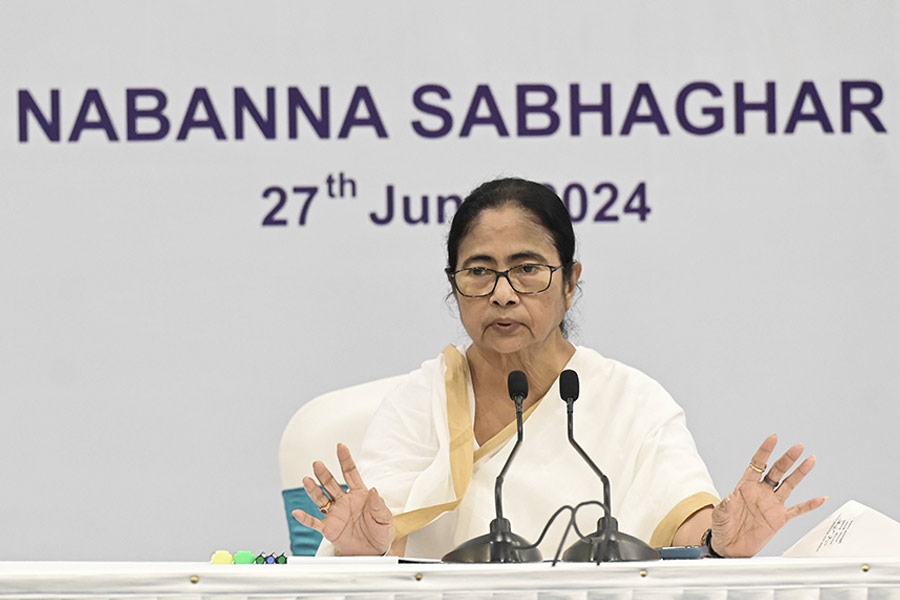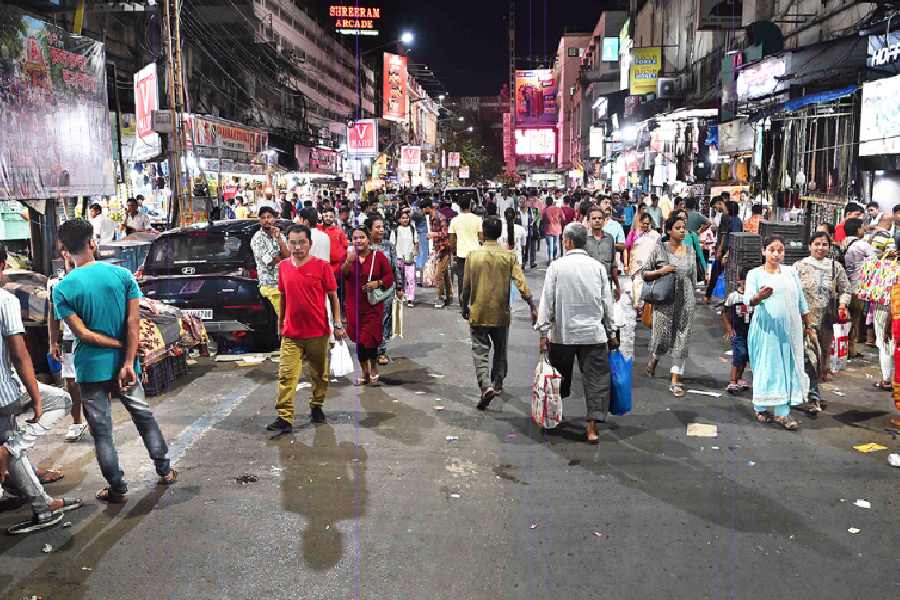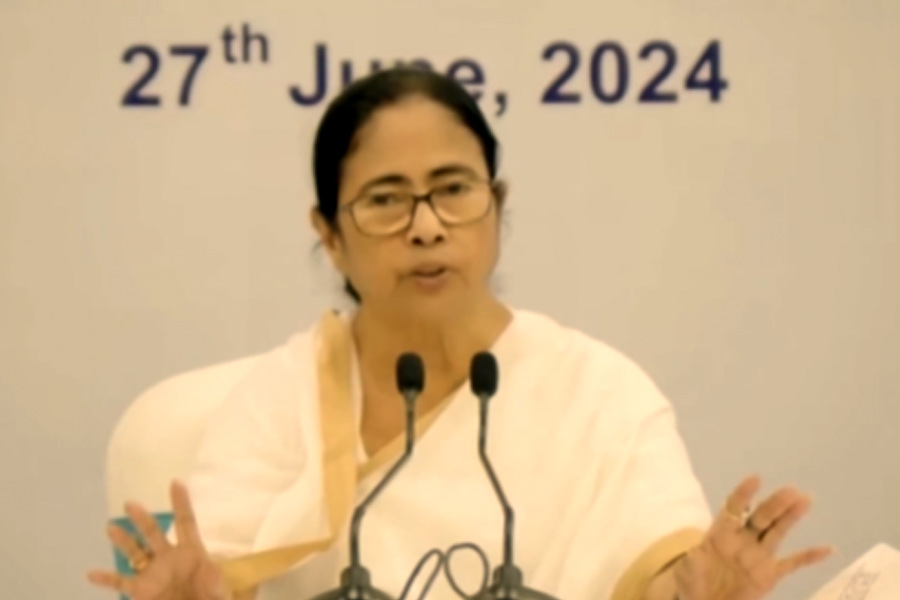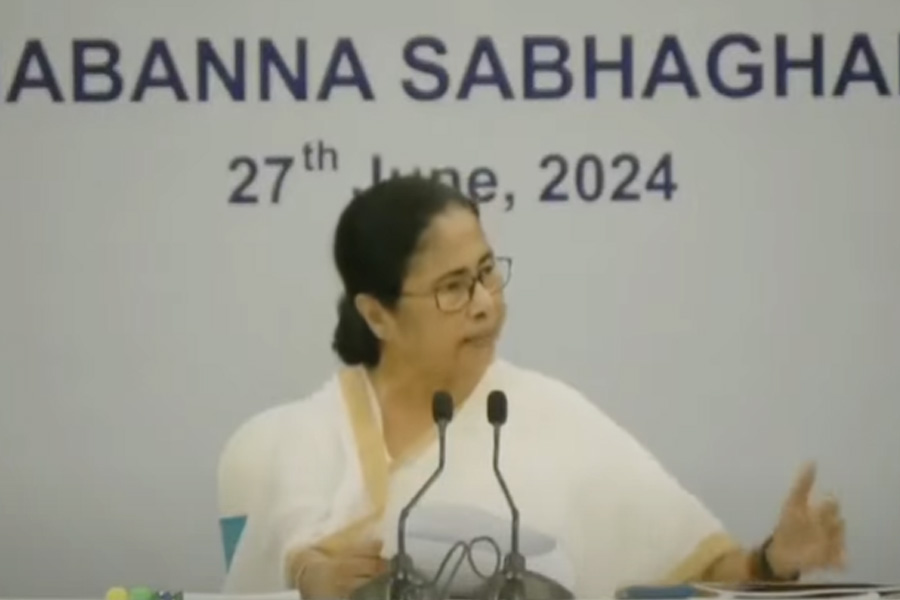On Tuesday, a day after Mamata Banerjee went hammer and tongs against her party colleagues, elected representatives, government and civic officials and police over encroachment on public spaces, the police in Calcutta, adjoining Salt Lake, distant Siliguri and Rampurhat, among other parts of the state, went on a clean-up overdrive.
Their immediate target: street-sellers, aka hawkers, who occupy a portion of the pavement or road and sell their wares, some with licences provided by the civic bodies, many others after paying hefty sums – as the chief minister admitted on Monday – to local leaders and cops.
The bulldozers deployed by the state – a familiar figure in BJP-ruled Uttar Pradesh and Madhya Pradesh – were in full swing till Thursday’s meeting at the state secretariat chaired by Mamata, where she spoke in favour of an organised system of removal of encroachments – and not bulldozers.
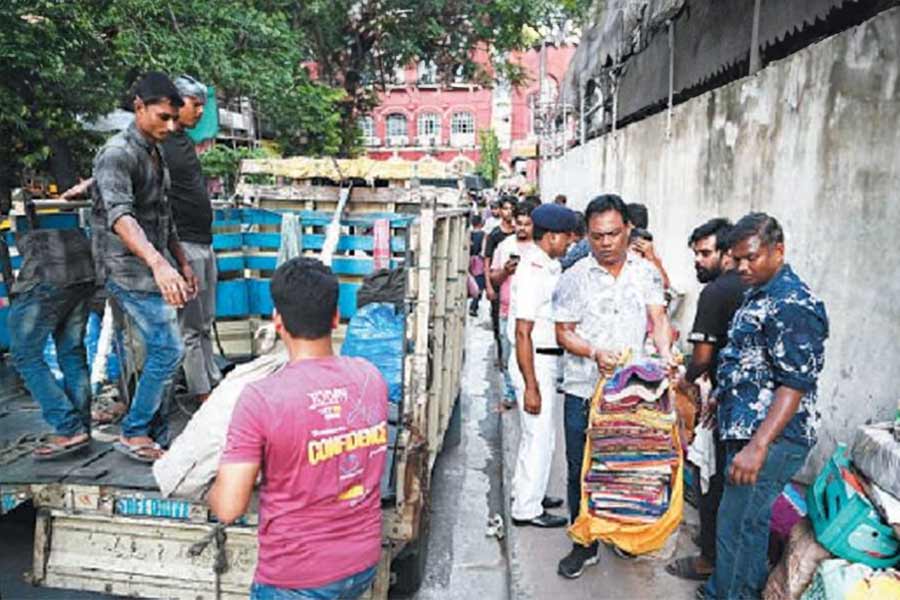
File Image
On Thursday morning, pavements in front of the Alipore zoological garden were cleared, while shopkeepers at Jadubabu’s bazar – both part of Bhowanipore, the chief minister’s constituency – were warned not to occupy space on the pavements around the market.
Other places where encroachments have been cleared include pavement opposite SSKM Hospital, parts of Gariahat, Hatibagan, parts of Salt Lake including Sector V, Grand Hotel arcade and Entally.
Why is the CM on an urban clean-up drive?
Mamata’s bulldozer drive comes weeks after the results to the Lok Sabha elections were announced. The primary reason behind Mamata’s taking the bulldozer route is believed to be her party’s hold weakening in the urban pockets.
Of the 144 wards in the Calcutta municipal corporation – 141 of them part of the Lok Sabha seats of Calcutta North and Calcutta South and three in Jadavpur – the Trinamul was trailing in 47 in the Lok Sabha elections.
In the municipal corporation at present, there are only seven members from the combined Opposition of the BJP, the Congress and the Left.
The BJP was also leading in the civic bodies in Bolpur, Gobardanga, Krishnagar, Balurghat, Raigunj, Burdwan, Englishbazar, Jhargram, Barasat, Ashokenagar, Madhyamgram, Bongaon, Katwa, Kalna, Alipurduar and Balurghat, among others.
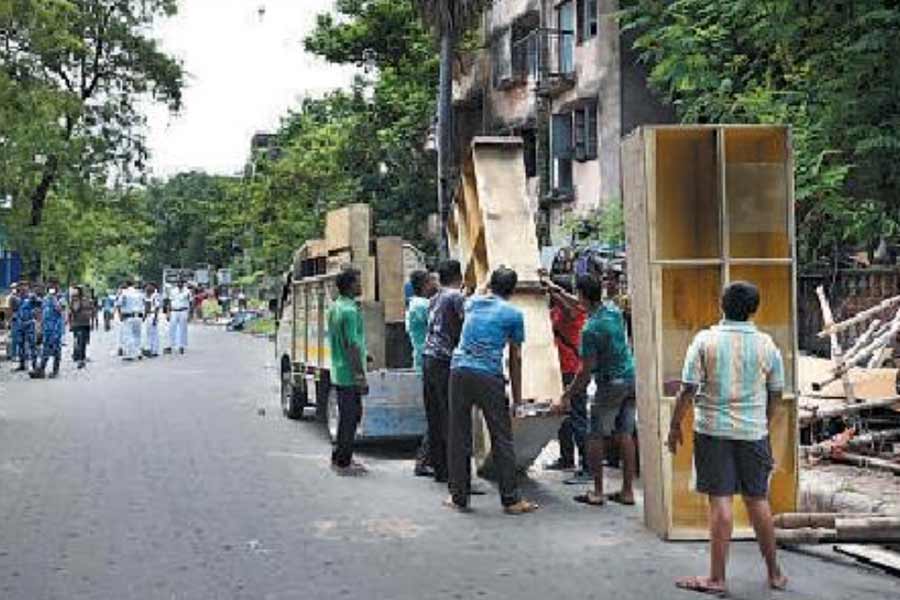
File Image
Ghost of the Left era
Around the 1980s, the then ruling CPM in Bengal had hit upon the idea of settling unemployed factory workers on the pavements of Gariahat, as factories big and small shut shop and went bankrupt. Many of the unemployed local youths were on the verge of taking to a career in petty crime. Selling wares on the pavements of Gariahat or driving an auto-rickshaw seemed decent and civilised ways of making a living.
It took the CPM more than a decade-and-half to realise the civic disaster that it had created.
In the late 1990s, despite the divisions within the CPM, then minister Subhas Chakraborty went ahead with what came to be known as Operation Sunshine, a late-night drive to clean up major hawker spots such as Gariahat Road, Brabourne Road, Shyambazar, Hatibagan, Sealdah and Diamond Harbour Road.
The operation came a cropper, as the hawkers soon reclaimed their space on the city pavements.
While Calcutta reverted to its ramshackle ways, the CPM lost one of its vote banks, the hawkers.
Can Mamata Banerjee erase her past?
Mamata’s ascendance in Bengal’s politics was as the voice of the voiceless, the oppressed against the CPM which, after two uninterrupted decades in power, was seen as high-handed and arrogant.
Twenty-four years ago, Subrata Mukherjee, then a Congress MLA and mayor of Calcutta in a board run by the Trinamul with the BJP’s support, had fallen foul with his party boss, Mamata Banerjee, then Bengal’s main leader of Opposition.
Mamata had stonewalled her party mayor’s decision to remove around 3,000 hawkers in the stretch between the CESC headquarters at Victoria House till the Victoria Memorial.
Mukherjee had to step back again when Mamata opposed the Left Front government’s drive to remove encroachers from the Tolly’s Nullah at the Garia end.
The operation was carried out by Alapan Bandyopadhyay, then the district magistrate of South 24-Parganas. He is now chief adviser to the Mamata Banerjee government.
Mukherjee had assured all help from the municipal corporation to the state government. He decided to withdraw under pressure from Mamata.
Mamata went into another showdown with the Left Front government when it wanted to remove the squatters on the railway lines along Gobindapur, near Gariahat.
When then chief minister Buddhadeb Bhattacharjee pushed for clean fuel for the auto-rickshaws plying in and around Calcutta in 2009, a rising Mamata had thrown her weight behind the auto-rickshaw drivers.
“There is no difference between Operation Sunshine and the operation being carried out by Mamata Banerjee,” said political analyst Subhamoy Maitra.
“Mamata and possibly some analytics companies in background have understood the hawkers making a living on the pavements here are not her voters in Calcutta. They come from small towns. Presently, she has to keep the urban population happy. For these people [hawkers], she already has schemes like Lakshmir Bhandar.”
Maitra said the public show of admonishing party leaders, bureaucrats and police officers might be good for grabbing eyeballs but ultimately undermines the democratic process.
“A family can be run in this manner, not a government,” he said.
Enter BJP, the challenger
Despite the drubbing in the just concluded Lok Sabha polls in Bengal, the BJP has started making noises for the hawkers and is eyeing for a space to get back to the streets, which this issue might serve them on a platter.
Leader of Opposition Suvendu Adhikari has warned that he will stand in front of the bulldozers if those are not stopped immediately.
“She had advised the jobless youth of Bengal to cook ghughni at home and sell it on the streets. Unlike her party leaders who make money from extortion at various levels, these people are trying to earn an honest living. Does the chief minister want to snatch away their right to a decent livelihood?” Adhikari said.
“She is aware that the BJP has done well in the urban areas and is using this method to seek revenge. It is not going to work.”
Bulldozer slowdown already?
Can Mamata win over the urban voters while retaining the rural support base in the 2026 Assembly polls?
“The impact of the move will depend on the political equation that emerges in the state and who leads that against the Trinamul,” said Maitra.
In Thursday's meeting, Mamata indicated the bulldozers may slow down.
"My policy is not to allow settlers and then use bulldozers. I want restrictions to be imposed from the beginning," she said at the state secretariat on Thursday afternoon in a meeting with state ministers, bureaucrats, police and hawkers’ union representatives.
Mamata, during Thursday’s meeting, instructed the Calcutta police, mayor Firhad Hakim and others to carry out surveys in Hatibagan and the Grand hotel arcade.
“Don’t take bulldozers. Find out how it can be sorted," she said.
On Thursday, the chief minister also announced a five-member committee – which includes three ministers, Arup Biswas, Moloy Ghatak and Firhad Hakim – that would survey the areas in the state to find solutions to the encroachment and illegal-parking problems. For one month, the eviction drive will be stopped till the committee surveys the situation.
Anyone familiar with the workings of government – and the recent history of Bengal – can read the tea leaves.

